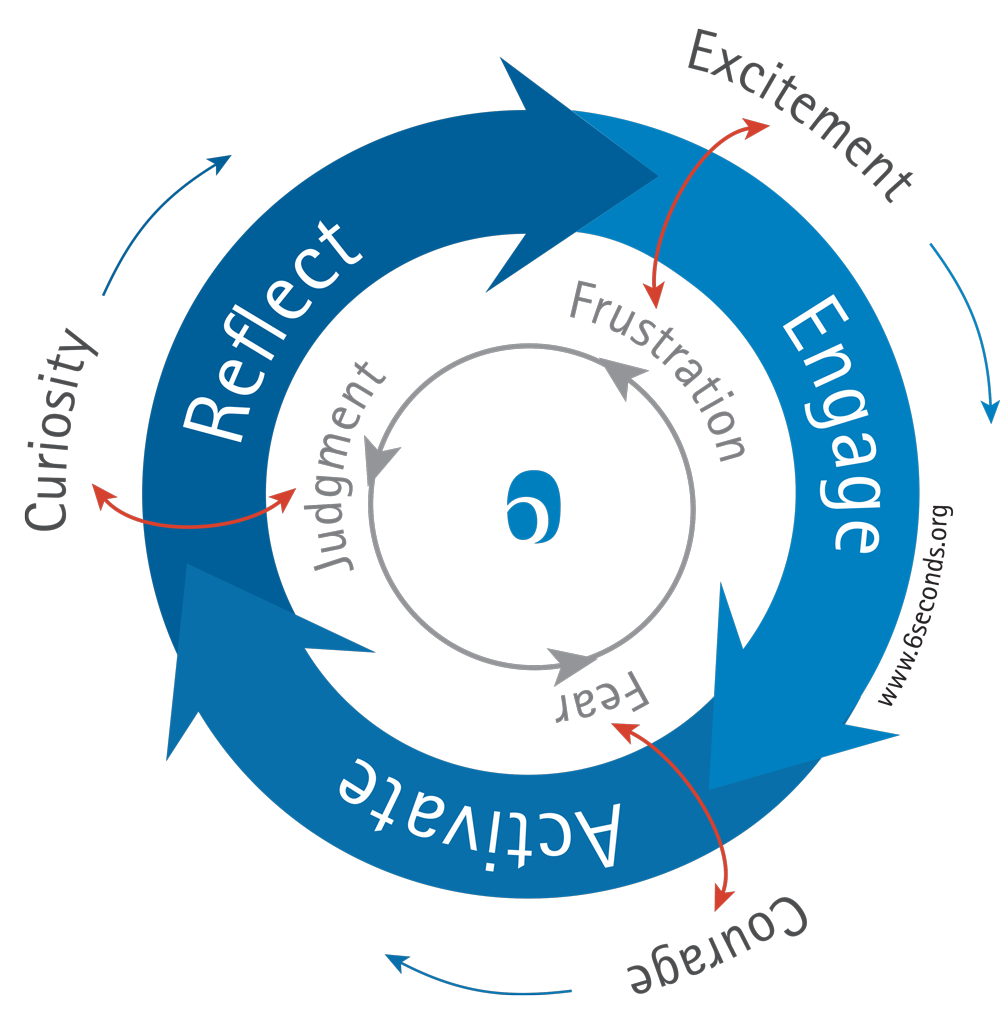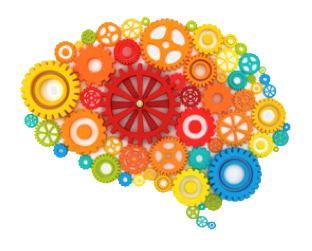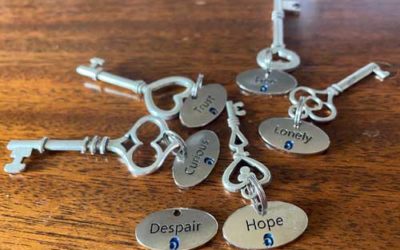What is “transformational” learning – and what makes it work?
Three essential ingredients that turn Six Seconds’ certification courses programs into life-changing learning experiences
What is your goal with learning? Is this entertainment? Or are you working to impart information?
Or do you want some change, some transformation, as they actually APPLY the learning?
At Six Seconds, learning is a process of change. We’re here to make a difference in the world by growing emotional intelligence — and for us, that goes beyond “knowing.” We want a billion people practicing emotional intelligence… so we’ve distilled 50 years of learning-about-learning into practical frameworks that make learning into a transformational process.
Explore the three ingredients, and continue below:
1. Structure for change
2. Clarify the how
3. Use their brains


For learning to fuel transformation, it’s a process of change. The CHANGE MAP offers a structure that incorporates both rational & emotional processes for change — and creates a simple template to build learning toward transformation.
What’s “the way” of a Six Seconds facilitator, educator, manager, coach… ? We’ve developed six principles that define our approach, and they’re all based on beliefs about learning. For example, if you really believe “wisdom lives within,” will you do more telling, or more asking?
Our brains are built to learn — but most learning experiences actively undermine the brain’s ability to engage in content and make meaning. Rather than “running the engine cold,” there are simple ways to activate hot cognition.
Social emotional learning?
Some authors talk about “social emotional learning” (SEL) as a curriculum for schools. At Six Seconds, we take a much broader and deeper view: Social emotional learning is the process for growing & practicing emotional intelligence.. and it sets a context for great learning.
The three key ingredients apply to all learning — math class can be boring, or it can be lifechanging. A corporate onboarding workshop can be mundane, or it can transform the employee’s engagement in the new role. By applying these tools, you can turn any learning experience into something deeper, more meaningful, and long-lasting.
What's new in emotional intelligence?
From Challenges to Change: 3 Life Lessons I Learned from Unlocking EQ
Discover how the Unlocking EQ course helped transform challenges into growth, connection, and purposeful living through three powerful life lessons.
No Rest for the Weary: Why Cultivating Rest Is an Art and a Science
From sleep to reflection, explore the 7 types of rest that restore balance, spark creativity, and boost wellbeing.
Grappling with Challenging Emotions as a Manager: 18 Effective Emotional Intelligence Strategies
On average, you and every person you interact with is experiencing more distress than you did just a few years ago. The heightened level of struggle presents a profound leadership challenge – here’s how to use emotional intelligence to handle difficult emotions, starting with your own.
What Are Emotions? Understanding the Science and Meaning Behind How We Feel
Emotions are messages from your body and brain. Learn what emotions are, why we feel them, and how emotional intelligence helps us use them wisely.
Empathy Isn’t Fragile: Turning Sensitivity into Your Superpower
Discover how to turn sensitivity into strength — explore the science of empathy, balance emotions, and use compassion as your superpower.
Resilience in Recessionary Times: Emotional Intelligence Strategies to Stay Grounded in Escalating Challenge
When “our emotional buckets are running low,” we need to both stop the leaks AND refill our buckets. Here’s how to use emotional intelligence to build resilience, even when it feels extra-difficult to do so.
- Grappling with Challenging Emotions as a Manager: 18 Effective Emotional Intelligence Strategies - November 3, 2025
- What Are Emotions? Understanding the Science and Meaning Behind How We Feel - October 25, 2025
- Resilience in Recessionary Times: Emotional Intelligence Strategies to Stay Grounded in Escalating Challenge - October 5, 2025






